MCQ ON Asexual Reproduction for NEET |MCQ ON —NEET Biology class 12th |MCQ Questions for class 12 Biology chapter 1, Asexual Reproduction with answer | Check the below NCERT MCQ question for class 12 Biology chapter 1 based on Asexual Reproduction with answers.
MCQ Questions for class 12 Biology with Answers were prepared based on the latest pattern. We have provided class 12 Biology MCQs questions on Asexual Reproduction with answers to help students understand the concept very well.
MCQ on is useful for NEET/ CSIR/ UGC/ CBSE/ ICSE /AIIMS EXAM/ AFMC EXAM/ JAC exam/ STATE LEVEL MEDICAL EXAM
Introduction:-
Asexual Reproduction:- Asexual reproduction is a method of reproduction in which an organism produces offspring that are genetically identical to itself, without the involvement of gametes (sperm and egg cells) or the combination of genetic material from two parents. This process can occur through various mechanisms such as binary fission, budding, or vegetative propagation, depending on the type of organism. It results in the creation of genetically uniform offspring, often referred to as clones.
MCQ ON Asexual Reproduction for NEET
Here are 15 multiple-choice questions (MCQs) related to asexual reproduction, along with their answers:
1. Asexual reproduction involves:
a) The fusion of two gametes
b) The creation of genetically identical offspring
c) The mixing of genetic material
d) The formation of diverse offspring
Answer: b) The creation of genetically identical offspring
2. What is a common method of asexual reproduction in unicellular organisms like bacteria?
a) Binary fission
b) Budding
c) Meiosis
d) Fertilization
Answer: a) Binary fission
3. In which type of asexual reproduction does a new individual grow from the parent organism, forming an outgrowth?
a) Binary fission
b) Budding
c) Fragmentation
d) Parthenogenesis
Answer: b) Budding
4. What is the primary advantage of asexual reproduction in stable environments?
a) Rapid adaptation to changing conditions
b) Genetic diversity
c) Energy conservation
d) Efficient use of resources
Answer: c) Energy conservation
5. In plants, what part of the plant can give rise to new individuals through asexual reproduction?
a) Flowers
b) Leaves
c) Roots
d) Stems
Answer: d) Stems
6. During regeneration, some animals can regrow lost body parts. This is an example of:
a) Binary fission
b) Regenerative asexual reproduction
c) Fragmentation
d) Parthenogenesis
Answer: b) Regenerative asexual reproduction
7. What is the term for a type of asexual reproduction where an organism breaks into several pieces, each of which can develop into a new individual?
a) Binary fission
b) Budding
c) Fragmentation
d) Parthenogenesis
Answer: c) Fragmentation
8. Which of the following is an example of parthenogenesis?
a) A starfish regenerating a lost arm
b) A bee colony producing a new queen bee
c) A female lizard laying eggs that develop without fertilization
d) A yeast cell undergoing binary fission
Answer: c) A female lizard laying eggs that develop without fertilization
9. In the process of spore formation, what is produced as a means of asexual reproduction in certain fungi and plants?
a) Seeds
b) Bulbs
c) Spores
d) Rhizomes
Answer: c) Spores.
ALSO READ:-
● YOU CAN WATCH BIOLOGY SIR Youtube channel
10. What is the primary disadvantage of asexual reproduction in terms of genetic diversity?
a) It results in too much genetic variation.
b) It leads to the mixing of genetic material.
c) It produces genetically identical offspring.
d) It requires the involvement of two parents.
Answer: c) It produces genetically identical offspring.
11. In which of the following organisms is binary fission a common method of asexual reproduction?
a) Humans
b) Amoebas
c) Dogs
d) Birds
Answer: b) Amoebas
12. What is the primary advantage of asexual reproduction in unstable or rapidly changing environments?
a) Genetic diversity
b) Energy conservation
c) Resistance to disease
d) Slower population growth
Answer: a) Genetic diversity
13. Some plants can produce new individuals by sending out horizontal stems underground. What are these horizontal stems called?
a) Runners
b) Bulbs
c) Rhizomes
d) Tubers
Answer: c) Rhizomes
14. What is the main reason why organisms that reproduce asexually do not require a mate?
a) Mates are not available.
b) Asexual reproduction is faster.
c) Asexual reproduction does not involve genetic exchange.
d) Mates are only needed for protection.
Answer: c) Asexual reproduction does not involve genetic exchange.
15. What term describes the process by which a parent organism divides into two nearly equal parts, each of which develops into a new individual?
a) Fragmentation
b) Budding
c) Binary fission
d) Parthenogenesis
Answer: c) Binary fission.
Conclusion:-
MCQ ON Asexual Reproduction for NEET:- In the process of spore formation, what is produced as a means of asexual reproduction in certain fungi and plants?, a) Seeds, b) Bulbs, c) Spores, d) Rhizomes, Answer: c) Spores.

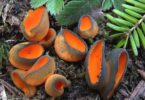
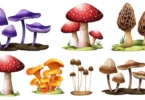
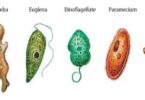
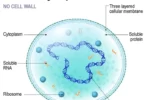
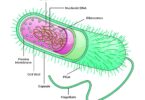
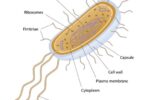
Leave a Comment